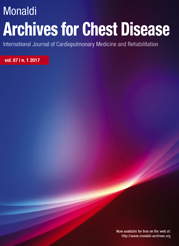Q fever endocarditis: a diagnostic challenge in a complex cardiological case
All claims expressed in this article are solely those of the authors and do not necessarily represent those of their affiliated organizations, or those of the publisher, the editors and the reviewers. Any product that may be evaluated in this article or claim that may be made by its manufacturer is not guaranteed or endorsed by the publisher.
Accepted: 7 May 2025
Authors
Q fever endocarditis remains a diagnostic challenge today. Although it is a rare condition, it is crucial to recognize, as it represents the most common cause of endocarditis with persistently negative blood cultures. Here, we present the case of a 73-year-old woman with a history of coronary artery disease and systemic sclerosis who was admitted to the hospital complaining of asthenia and dyspnea. An echocardiographic examination revealed a highly mobile pedunculated mass on the mitral valve, suggestive of endocarditis. During the diagnostic workup, blood cultures were repeatedly negative, but serological testing confirmed positivity for Coxiella burnetii (IgG phase I 1:128). After diagnosing Q fever endocarditis, antibiotic therapy with doxycycline and hydroxychloroquine was initiated but was soon discontinued due to the development of renal impairment and thrombocytopenia. The clinical course was further complicated by cardiac arrest, leading to the patient's death. Given the rarity of this condition, this case highlights the importance of considering Q fever endocarditis in the differential diagnosis of blood culture-negative endocarditis and underscores the need for rapid diagnosis using advanced diagnostic techniques to improve patient outcomes.
How to Cite

This work is licensed under a Creative Commons Attribution-NonCommercial 4.0 International License.






